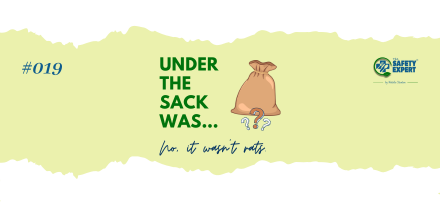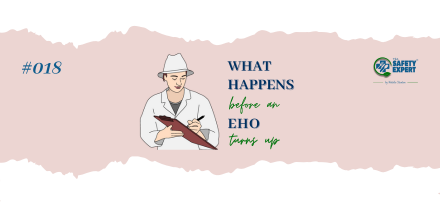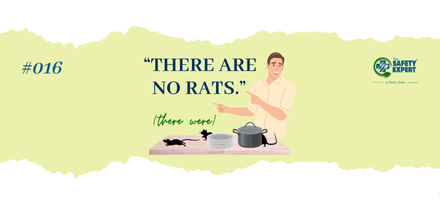The time I bought sanitiser for a kebab shop. With my own money.
Table of Contents
EHO Story 📩
This one takes me back to my days working in local government.
There was a kebab shop I was working with. The owner was defensive from day one. Not aggressive, not hostile, just really hard work. No matter how I tried to explain things, he didn’t want to engage. He didn’t trust the process and made it clear he didn’t want help.
I’d been a few times. The place wasn’t horrendous, but there were clear areas for improvement.
One of the main things?
He didn’t have any sanitiser, let alone one that complied with BS EN 1276 or BS EN 13697. Every time I asked about it, he either shrugged it off or gave a vague excuse.
Now, this wasn’t a formal enforcement case. It wasn’t bad enough for legal action.
But it was frustrating, because these were small, easy wins. Things that could’ve been sorted in minutes, and made a real difference to hygiene standards.
After one visit and returning to find still no sanitiser, I’d had enough.
I said to him, “Look, Waitrose is just around the corner. You could nip over there now and pick up a compliant sanitiser while I’m still here.”
He refused. Point blank.
So I said:
“Fine. I’ll go.”
And I did. Out of my own pocket, I bought him a compliant sanitiser and dropped it back off.
Now, just to be clear, this is not standard practice.
It’s not something I’ve ever done before or since.
But what happened next surprised me.
Something shifted.
He was genuinely shocked. I think in that moment, he realised I wasn’t there to catch him out or boss him around, I just wanted the place to be safe, and I was willing to meet him halfway.
After that, his attitude completely changed.
🧼 Food Safety Tip: Here are 3 things EHOs check with sanitisers
✔️Does it comply with BS EN 1276 or BS EN 13697? You’ll either find the info on the label or check with your supplier.
✔️ What’s the contact time? That’s how long the chemical needs on a surface to reduce bacteria to a safe level. You should be able to find this information on the product label, but if it’s not, check with your supplier.
✔️ Does it need dilution? And if so, how do you dilute it? A chemical that needs dilution must be diluted in accordance with the manufacturer’s instructions. To find this, check the product label or information from your supplier.
The Serious Lesson
This wasn’t about sanitiser. It was about pride. About mistrust. About someone who had probably spent years feeling like inspectors were just there to point out what was wrong.
But once he saw that I genuinely cared about getting it right, he let his guard down.
And that’s a good reminder for all of us, especially in leadership:
Sometimes, it’s not about who’s right. It’s about who goes first.
Whether it’s a business owner, a chef, or a junior team member, the resistance often isn’t about the task, it’s about the relationship. And a little act of goodwill, done at the right time, can change everything.
Ever had to go the extra mile to get someone on board with food safety?
Subscribe to my newsletter!
Get useful food safety tips and special offers directly to your inbox (you can unsubscribe at any time).




